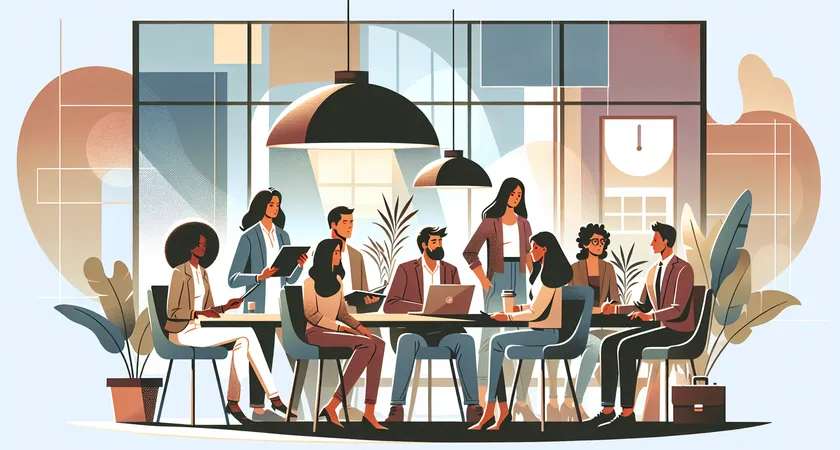In the digital marketing world, SEO is in a state of constant evolution. As algorithms grow smarter, so must our strategies for staying ahead. One of the latest trends making waves is the use of AI-generated alt texts. This innovative approach not only boosts search engine visibility but also streamlines content creation and enhances web accessibility. In this article, you'll discover how harnessing artificial intelligence to create optimized alt attributes for images can fuel your SEO success, improve user experience, and automate a typically tedious part of digital workflows. Intrigued by the notion of effortlessly scaling SEO with intelligent automation? Let's dive into how AI is fundamentally changing the game for content optimization and what it could mean for your brand.
Understanding the Role of Alt Texts in Modern SEO
Before exploring the intersection of AI and alt texts, it's vital to understand how alt attributes shape SEO and digital accessibility. Alt texts—short for alternative texts—are HTML attributes applied to images, providing descriptions that appear when images cannot be displayed or read by assistive technologies. Their influence extends far beyond mere accessibility and is pivotal for modern SEO strategies.
The Fundamentals: What Are Alt Texts and Why Are They Important?
At their core, alt texts offer a textual description of images embedded on web pages. Originally intended to help screen readers convey content to visually impaired users, their function has grown as search engines like Google parse these descriptions to better understand and index visual content. Alt texts are essential for:
- Improving web accessibility for users with disabilities
- Supporting image SEO and discoverability on search engines
- Ensuring content compliance with regulations such as the ADA and WCAG
For example, an e-commerce store with descriptive alt texts can help shoppers using screen readers find and understand product images, leading to a more inclusive experience and better SEO rankings. 
SEO Impact: From Accessibility to Search Engine Ranking
Alt texts play a critical role in how search engines evaluate and rank your site. Google's algorithms analyze these attributes to gauge page relevance and context. Studies show that including targeted keywords in alt texts can increase organic traffic from image searches by up to 37% (Source: Moz). Consider a blog on travel destinations: optimized alt descriptions on photos of landmarks increase the likelihood those images appear in Google Images, drawing in additional visitors.
- Boosts on-page keyword relevance
- Facilitates richer snippets in search results
- Improves indexing of visual content
Creating manual, unique alt texts for hundreds or thousands of images often becomes a bottleneck. This is where scalable solutions like AI-generated alt texts become indispensable. 
Challenges of Traditional Alt Text Creation
Despite their importance, alt texts are frequently neglected or poorly implemented. Many content creators fall into the trap of either omitting them altogether or defaulting to generic, keyword-stuffed descriptions such as "image1234.jpg." This not only undermines accessibility but can trigger search engine penalties.
- Time-consuming, especially at scale
- Inconsistency and human oversight
- Potential for non-compliance with accessibility laws
A real-world example: an online publisher uploads 800 images monthly. Writing unique alt descriptions for each by hand isn't feasible, often resulting in shortcuts that harm both user experience and SEO. This sets the stage for modern solutions leveraging AI. 
How AI Revolutionizes Alt Text Generation
The advent of artificial intelligence is transforming how digital teams approach image optimization. Automating the process of creating SEO-optimized alt texts with AI technology not only addresses the challenges named above, but it also elevates the quality and consistency of your content at scale.
The Technology Behind AI-generated Alt Texts
Modern AI models, powered by machine learning and computer vision, can "see" images and produce descriptive, context-aware alt attributes optimized for both humans and search engines. These tools analyze:
- The objects, people, and settings depicted
- Context clues from page content and metadata
- Relevant keywords and site language
For example, an AI tool processing an image of a laptop on a desk might generate: "Sleek laptop on a modern office desk beside a cup of coffee." This is both human-readable and SEO-friendly. 
This automation isn't just about saving time—AI reduces human error, ensures regulatory compliance, and maintains a consistent brand voice across thousands of product images or blog posts.
Advantages Over Manual Approaches
What makes AI so appealing for alt text generation? Unlike manual efforts:
- Scalability: AI can create unique alt texts for thousands of images in minutes
- Consistency: Maintains tone, style, and keyword focus
- Accuracy: AI models continually learn and improve based on visual data trends
According to recent studies by Content Marketing Institute, companies using AI tools for image descriptions reported a 50% reduction in time spent on content optimization tasks, while achieving higher levels of WCAG compliance.
- Case Study: An online retailer increased their organic SEO traffic by 25% within three months of automating alt text creation with AI.
- Case Study: A media company met strict accessibility standards after deploying an AI-driven workflow, reducing manual revisions by half.
These clear business benefits drive adoption across industries, particularly where digital content scales quickly. 
Common Pitfalls and AI Mitigation
While AI streamlines alt text creation, it's important to monitor for rare errors, such as:
- Overly generic descriptions (e.g., "image of a person")
- Missing contextual details relevant to search intent
- Inclusion of inappropriate or irrelevant keywords
Advanced AI platforms like Beatrice ensure output quality by combining image recognition with contextual analysis from your page or product metadata. Human review can also serve as a valuable last check, especially in highly regulated industries. 
The Commercial Edge: Leveraging Alt Text Automation for Scalable SEO Gains
AI-generated alt texts aren't just a technical upgrade—they represent a strategic leap for businesses looking to outpace competitors. The commercial case for automated alt descriptions goes far beyond cost or compliance; it extends to workflow efficiency and market reach.
Streamlining Content Workflows with Content Automation
Integrating alt text generation with content management systems (CMS) and digital asset management (DAM) platforms unlocks full automation. For growing businesses and agencies, this means no more bottlenecks in publishing or site updates. AI-based solutions, such as Beatrice, plug directly into your workflow, processing image batches and providing consistent, optimized output instantly.
Consider these advantages:
- Reduced reliance on manual labor for repetitive tasks
- Accelerated content publishing schedules
- Instant scalability as your media library grows
For instance, a SaaS company managing customer knowledge bases can ensure every screenshot or chart is described and indexed correctly without slowing down updates or requiring specialized training.
SEO Optimization at Scale: Standing Out in Competitive Niches
In highly competitive markets, optimizing every detail matters. AI-generated alt texts ensure each image contributes to both keyword strategy and accessibility standards. Rather than relying on a handful of high-value keywords, you can target long-tail opportunities at scale, broadening your organic reach.
- Localized or industry-specific terms can be incorporated into image descriptions automatically
- Performance monitoring enables continual improvement and adaptation to SEO trends
Imagine a real estate firm: AI-generated alt tags that include neighborhood names, architectural styles, and key features improve not only accessibility, but also increase the chances of ranking for hyper-local search queries.
Integrating with API Workflows and Digital Platforms
Modern digital ecosystems depend on seamless integrations. Many businesses now manage content across multiple platforms, from e-commerce sites to mobile apps. Powerful APIs allow AI alt text solutions to fit directly into this puzzle, optimizing assets as they're uploaded or updated.
- Automated alt generation on image upload or at scheduled intervals
- Centralized quality control for enterprise media assets
- Consistent compliance and optimization across all channels
This integration extends competitive advantages, letting businesses move faster and more confidently in their digital operations.
Choosing the Right AI Partner: Why Expertise Matters
With automation's rise, the need for experienced partners grows in equal measure. The effectiveness of your AI-generated alt text solution depends on both the underlying technology and the expertise guiding its deployment.
Common Pitfalls of DIY Solutions
It's tempting to deploy off-the-shelf tools or attempt manual automation. However, generic solutions may overlook nuances vital to your brand, audience, or industry context. Risks include:
- Inadequate keyword targeting, reducing SEO benefits
- Descriptions that don’t fit your company’s voice
- Compliance gaps in regulated sectors
Consider a healthcare website: AI must distinguish between similar-looking images that carry vastly different meanings. Without tailored training or human oversight, errors can lead to confusion or regulatory violations.
What to Look for in a Qualified Service Provider
When evaluating vendors or platforms, prioritize:
- Experience with SEO and content automation
- Customization by industry, language, and target audience
- Integration capabilities with API workflows and content management systems
- Proven track record and transparent reporting
Specialized partners like Beatrice offer advanced features, ongoing support, and continuous model improvements informed by real-world feedback.
Case Studies: The Value of Qualified Implementation
Several high-growth companies attribute lasting SEO gains to expert-led AI integration. For example:
- A global retailer, after onboarding a dedicated provider, saw its images dominate Google Image search results for targeted product terms
- A SaaS platform expanded into new markets by localizing all image alt texts in over 10 languages within weeks, leveraging platform expertise
These outcomes are rarely possible with standard plug-and-play tools—consistent, scalable success requires technical depth and strategic insight.
Conclusion: Seize the Future of SEO with AI-driven Alt Texts
The evolution of SEO demands new tools and smarter strategies. AI-generated alt texts empower organizations to elevate every image, drive greater organic visibility, and provide meaningful accessibility—at unprecedented speed and scale. As competition intensifies and digital ecosystems expand, only those businesses leveraging intelligent automation and expert guidance will stay ahead of the curve.
Are you ready to unlock higher rankings, streamline your workflows, and deliver inclusive digital experiences? Partnering with a qualified provider ensures not just automation, but the right kind of automation—tailored, compliant, and always on brand. Discover how Beatrice, the content engine crafted for seamless SEO optimization, can transform the way you power your project’s visual content. The future of SEO is now. Will you lead the way?
